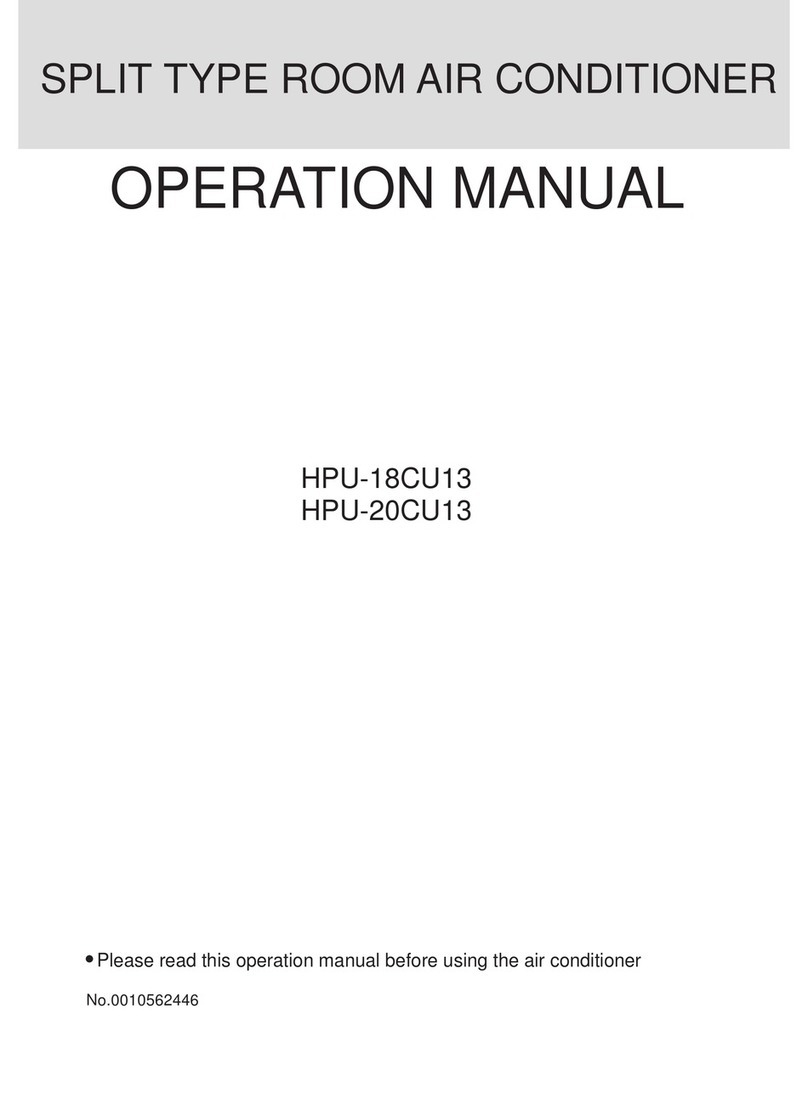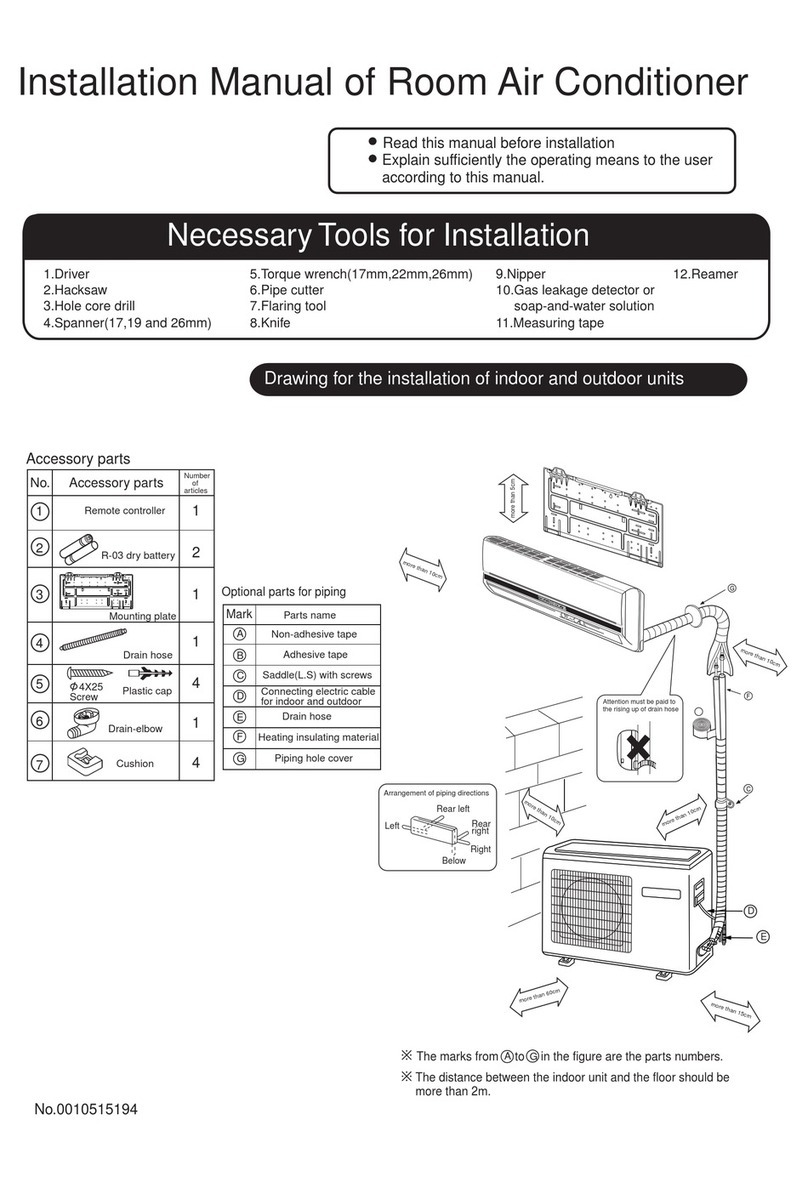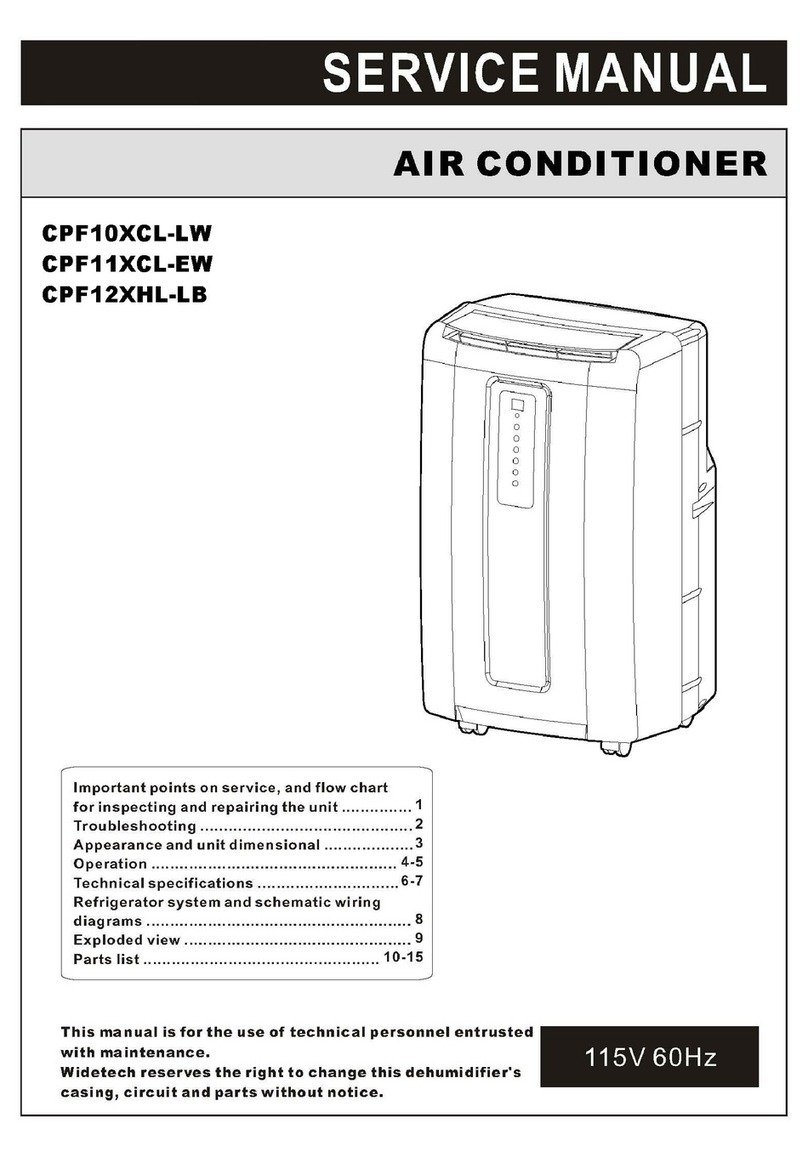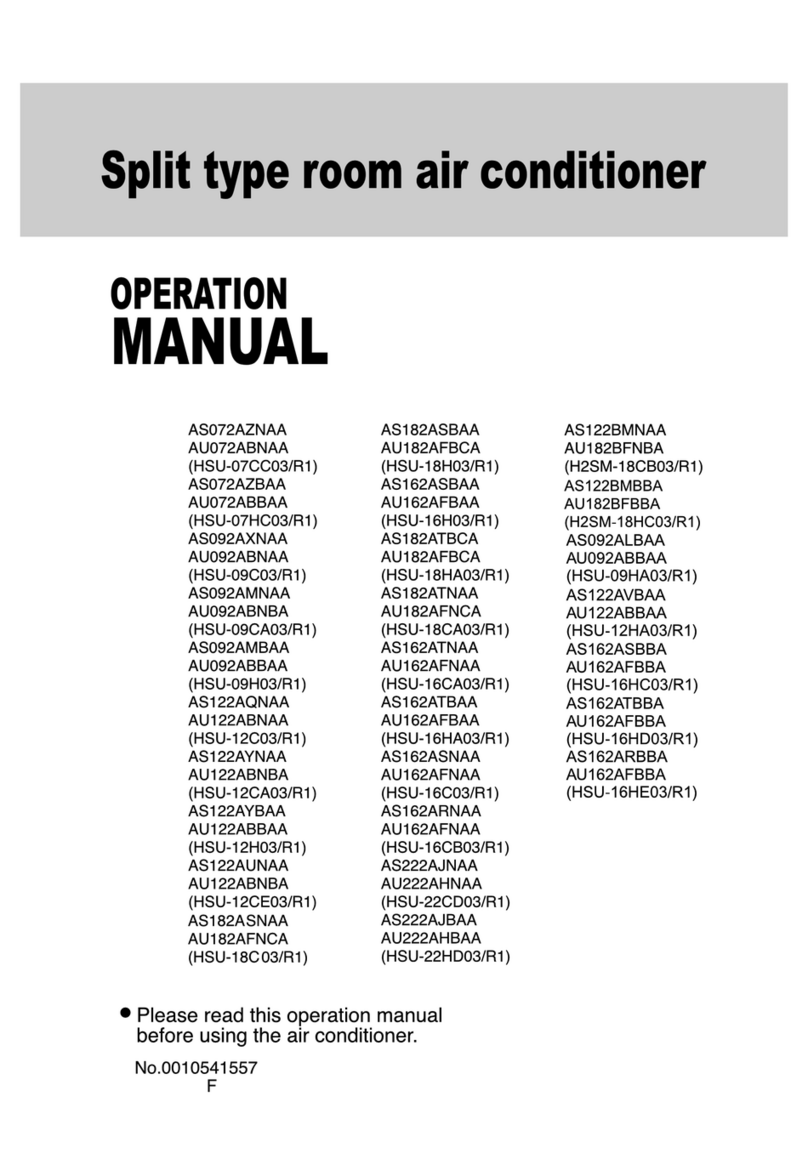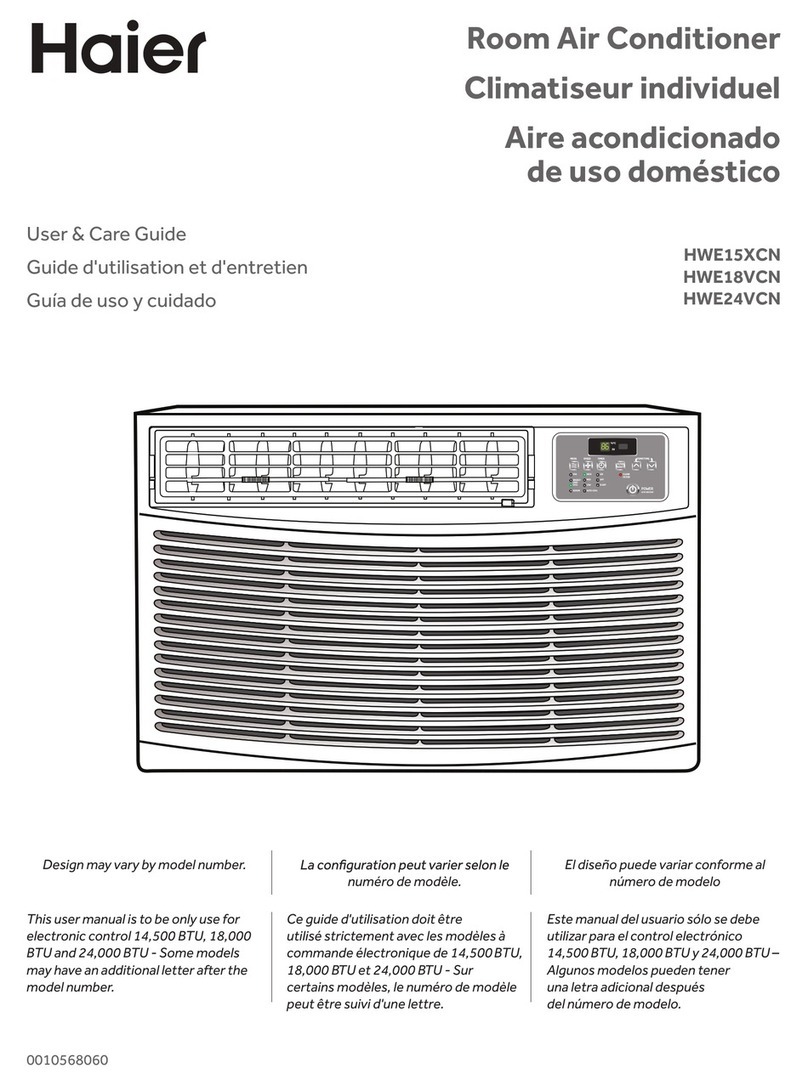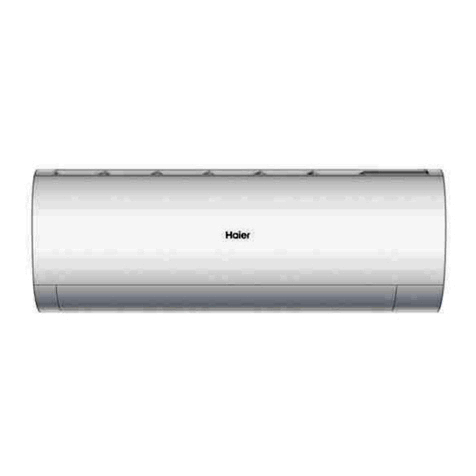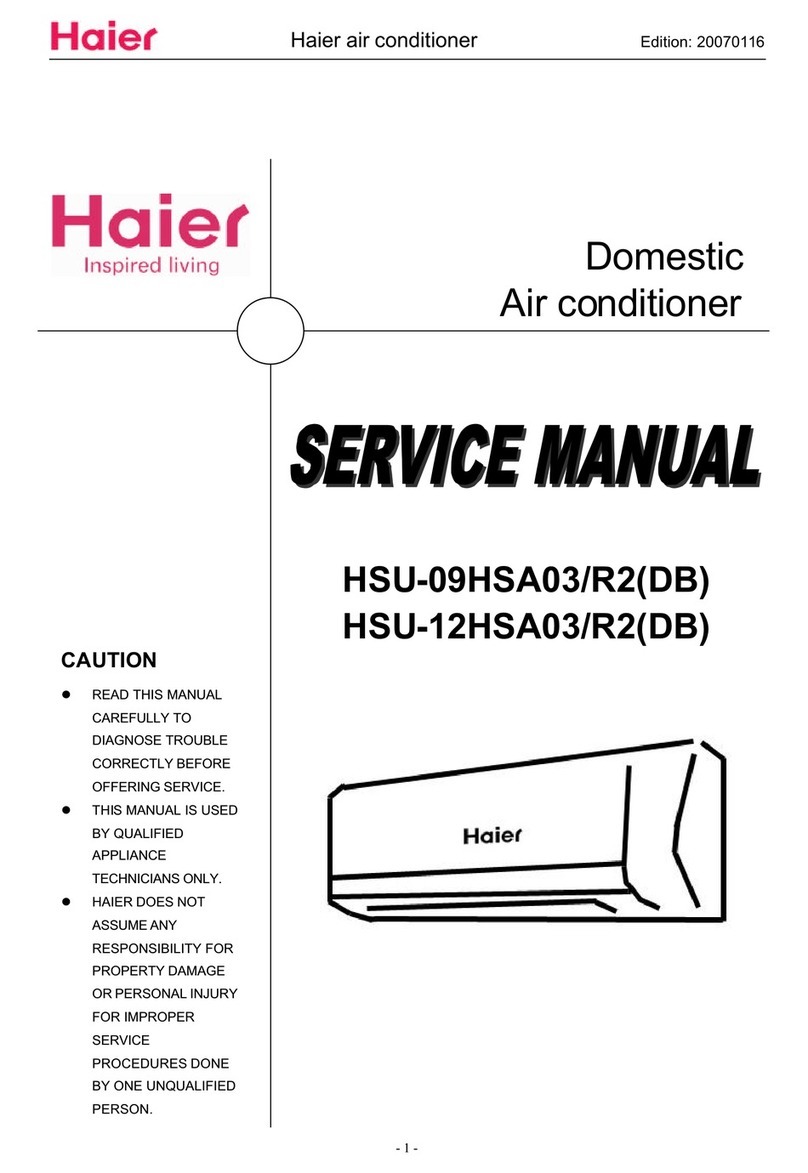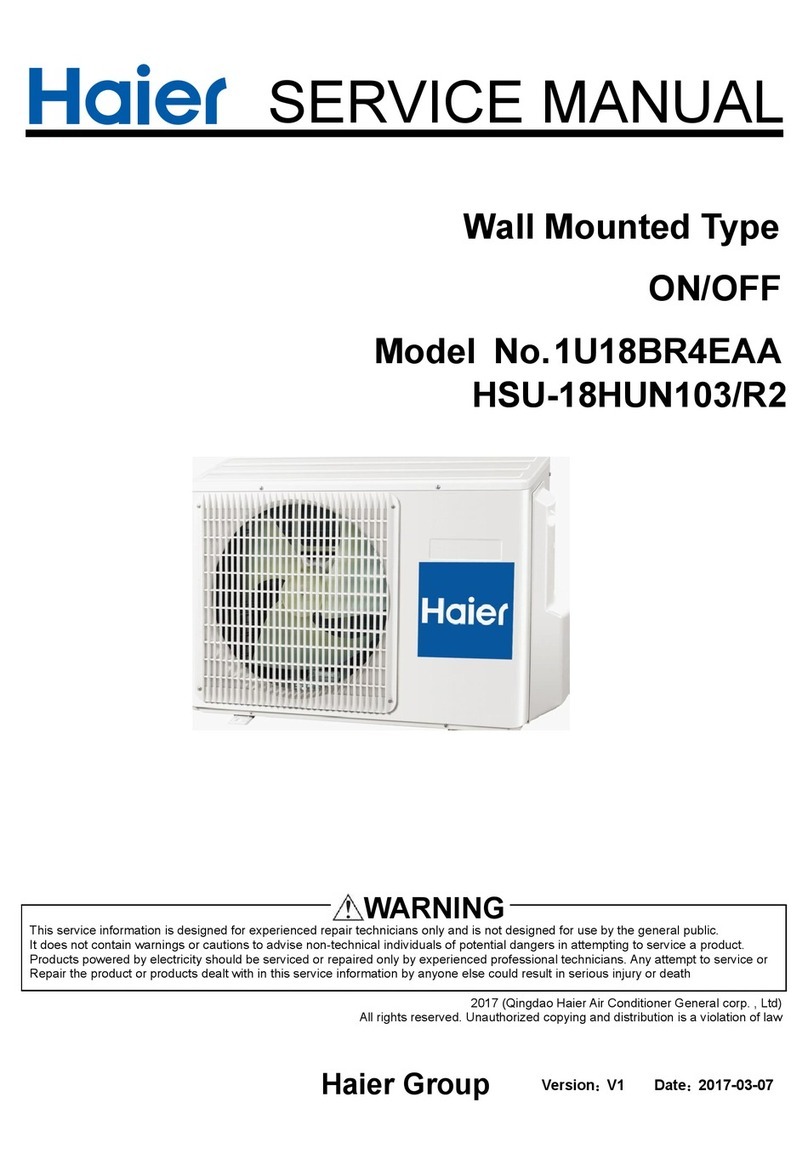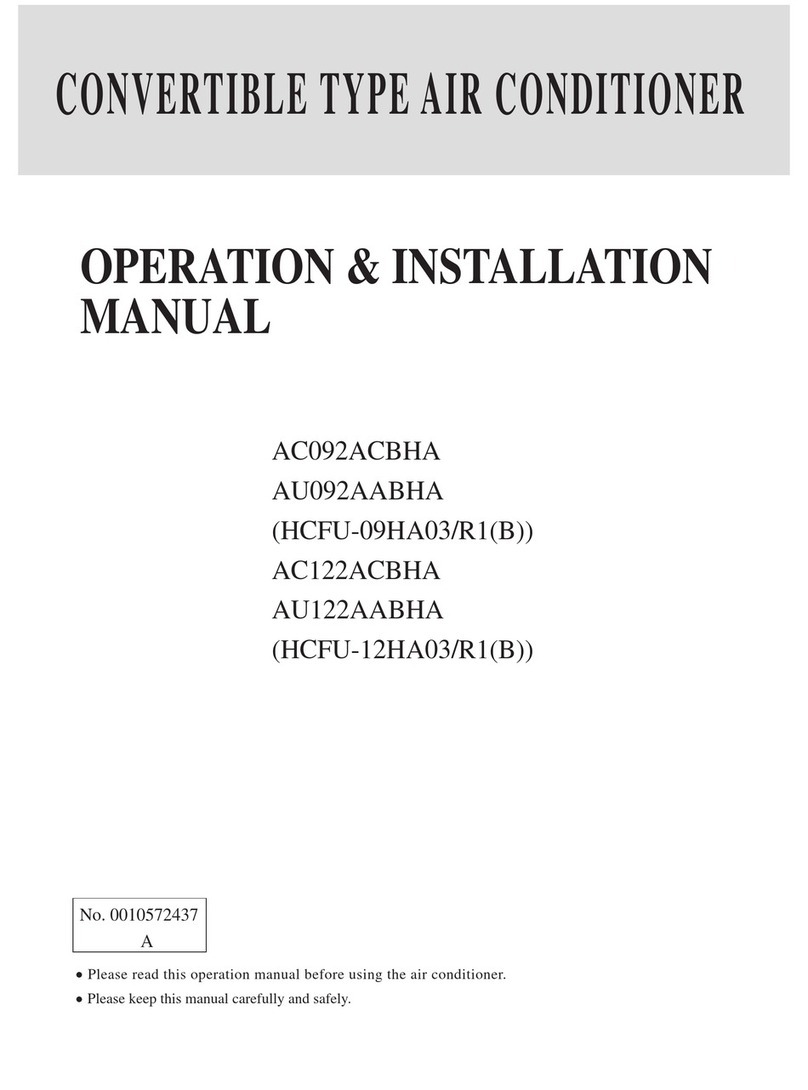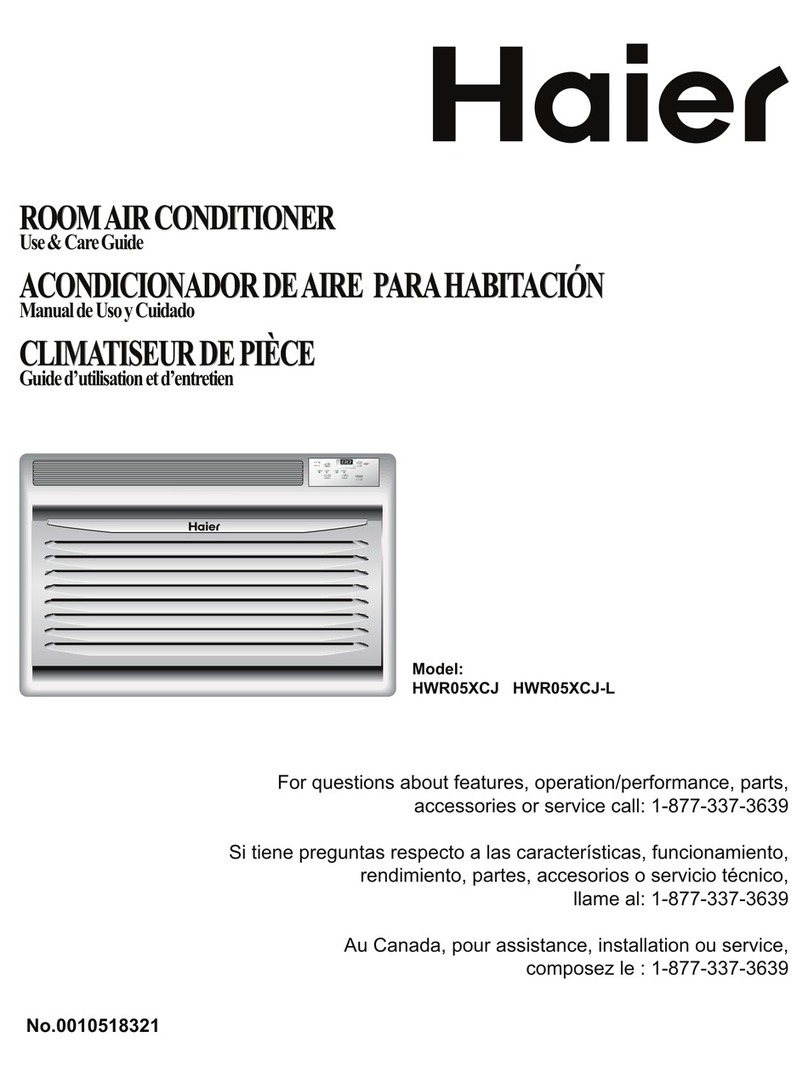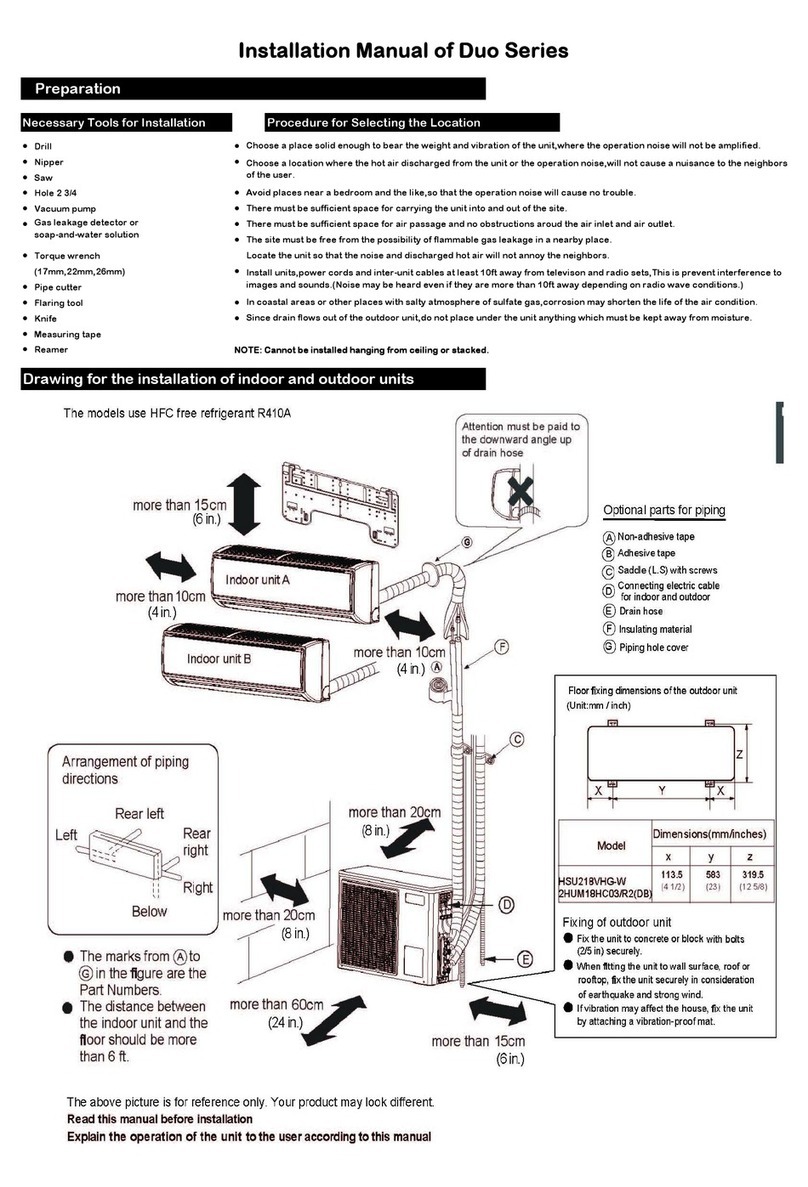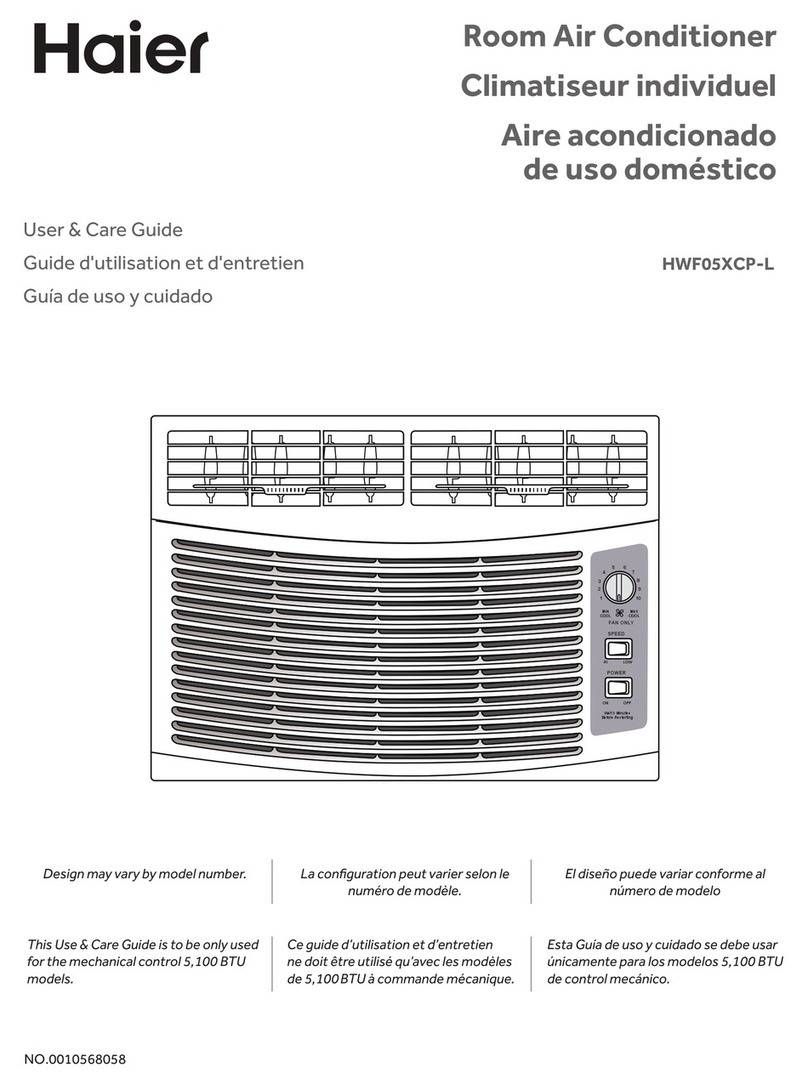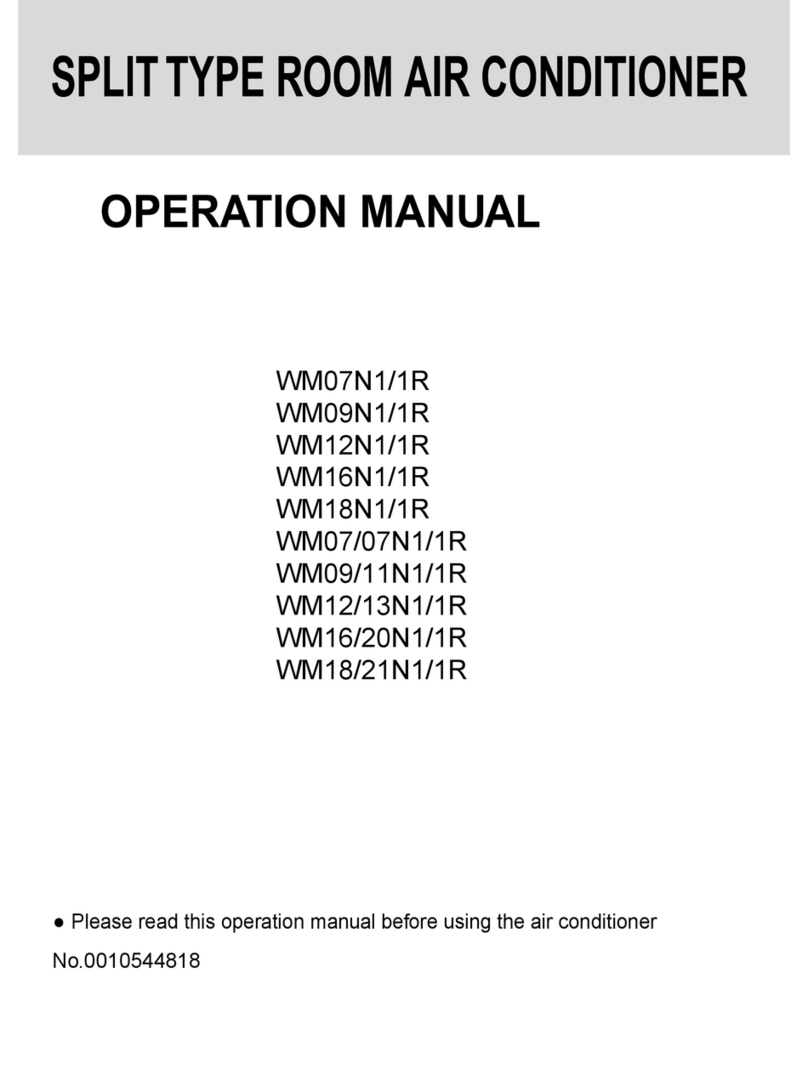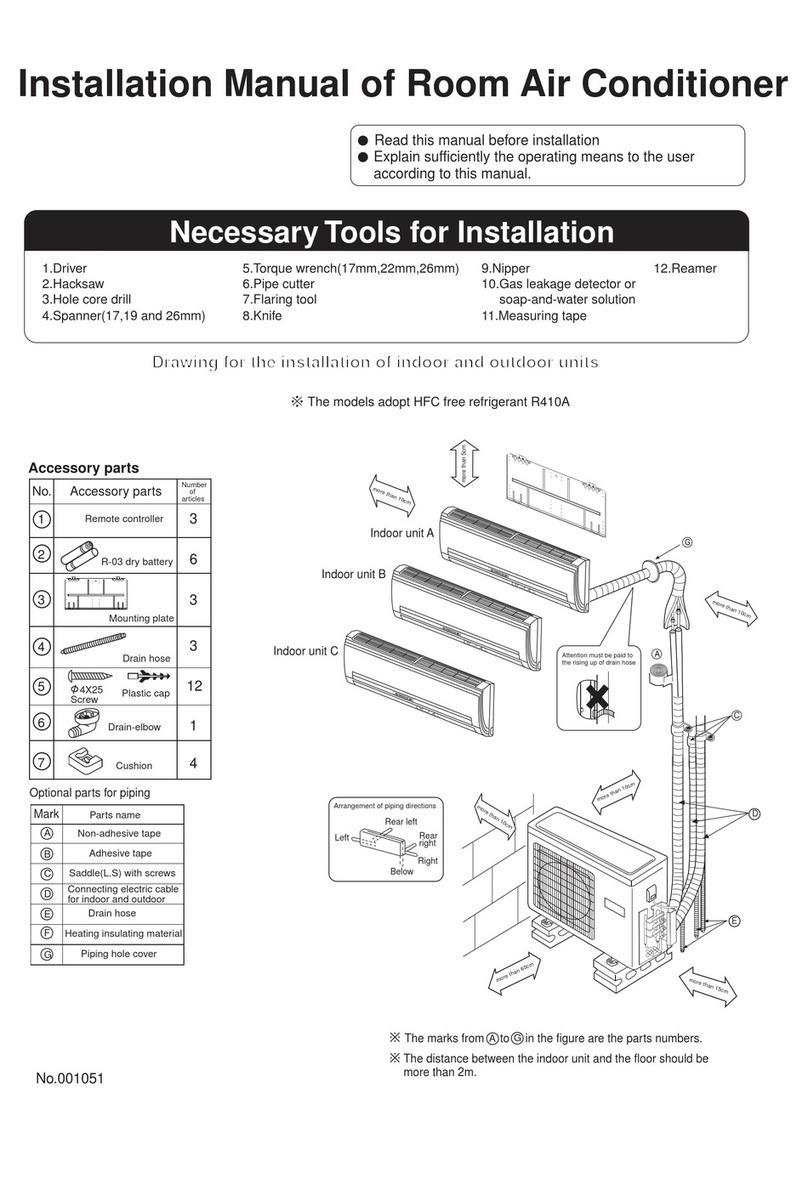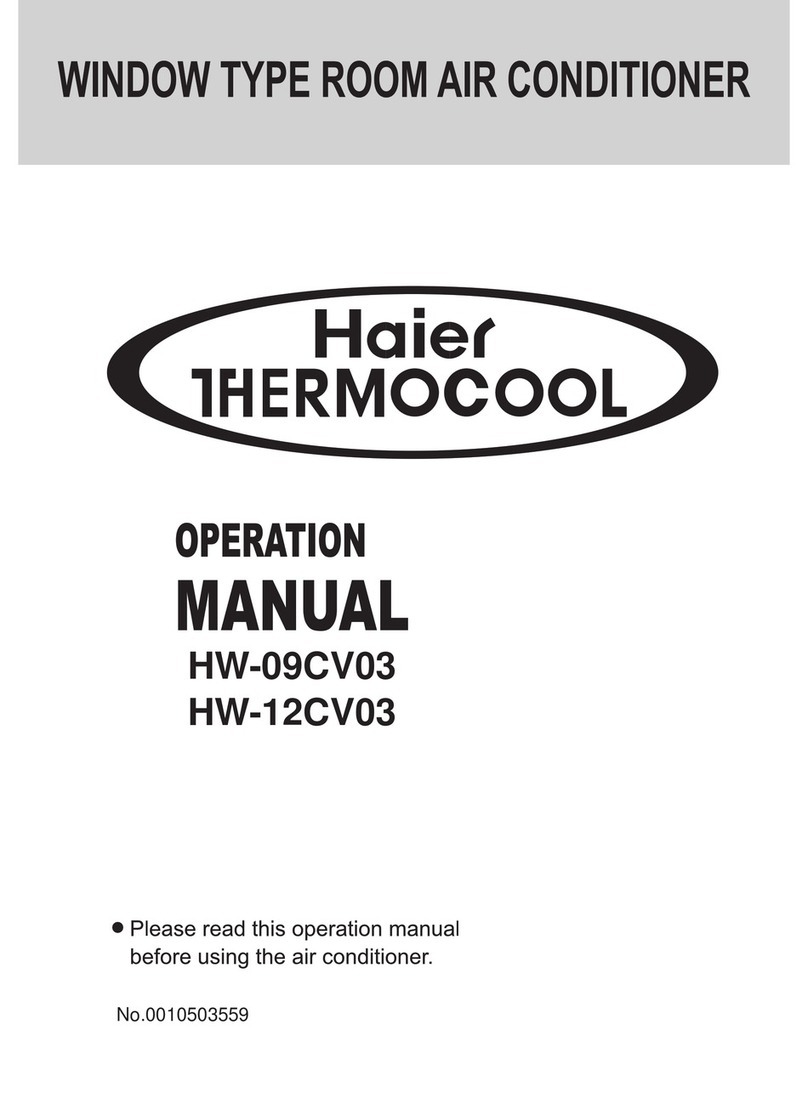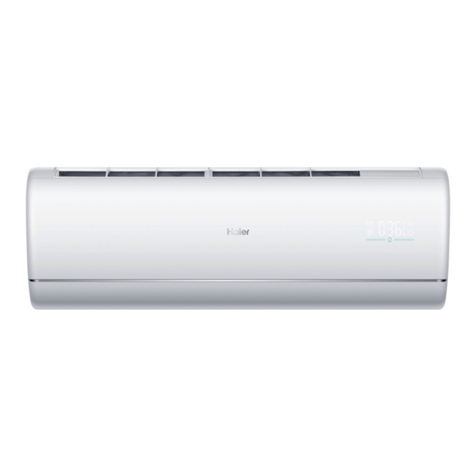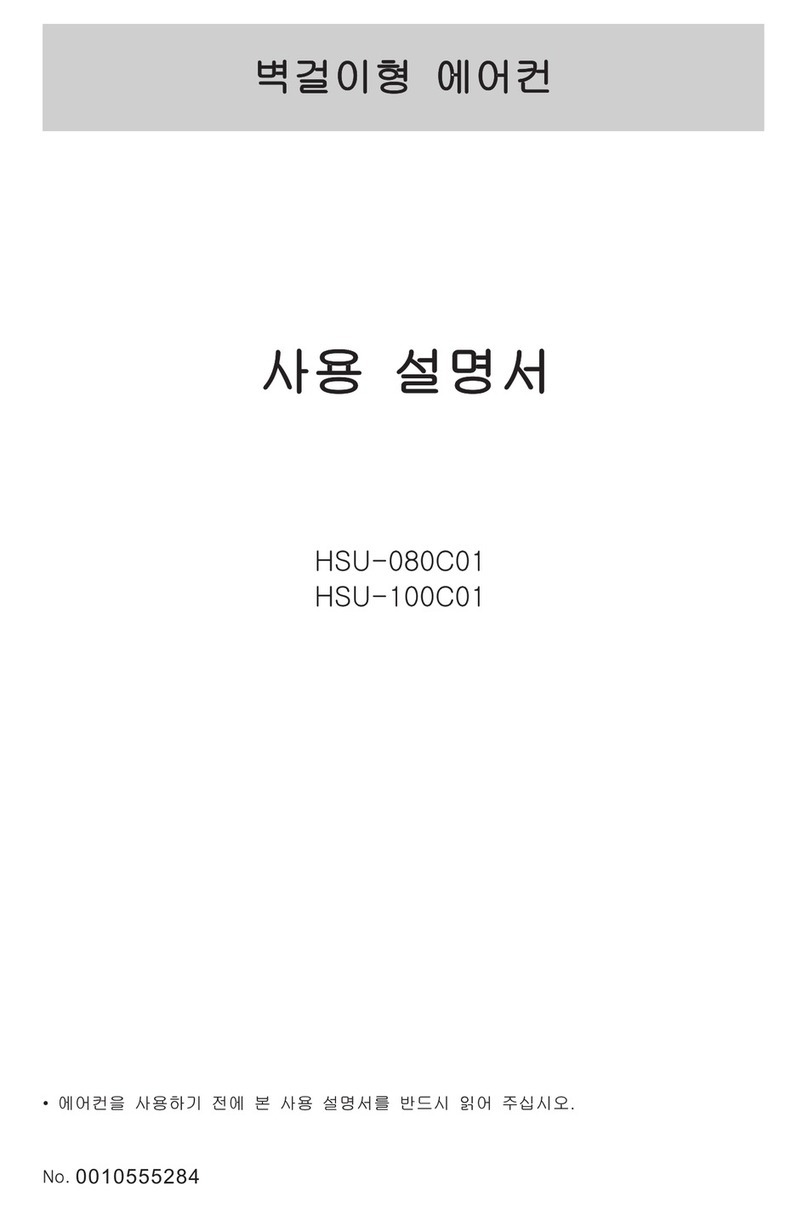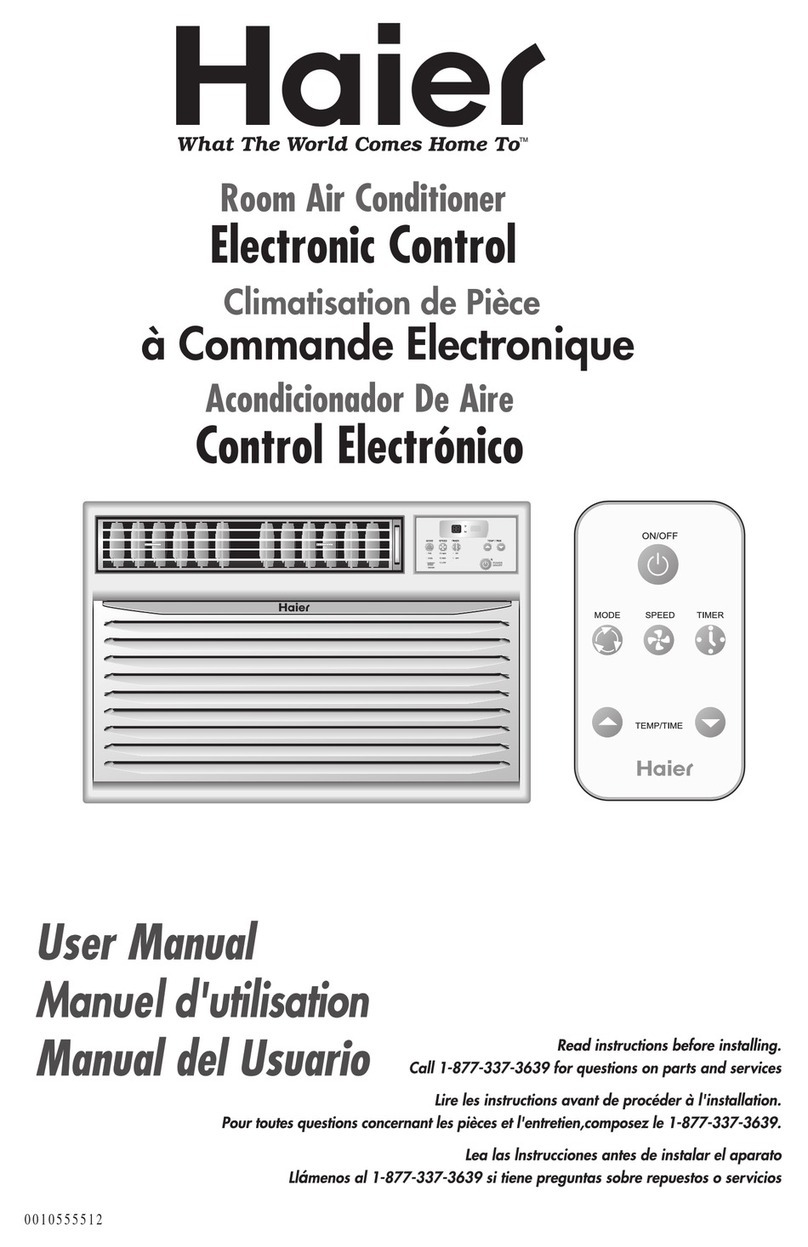
Page 10 31-5000747 Rev. 0
New or Replacement Line Set
This section provides information on new installation or re-
placement of existing line set. If a new or replacement line
set is not required, then proceed to Brazing Connections
on page 12.
If refrigerant lines are routed through a wall, seal and isolate
the opening so vibration is not transmitted to the building.
Pay close attention to line set isolation during installation
of any HVAC system. When properly isolated from building
structures (walls, ceilings. oors), the refrigerant lines will
not create unnecessary vibration and subsequent sounds.
REFRIGERANT LINE SET
Field refrigerant piping consists of liquid and suction lines
from the outdoor unit (braze connections) to the indoor unit
coil (are or braze connections). Use GE Appliances L15
(braze, non-are) series line set, or use eld-fabricated re-
frigerant lines as listed in table 2.
TABLE 2. Refrigerant Line Set – in. (mm)
Model
Field
Connections
Recommended Line Set
Liquid
Line
Suction
Line
Liquid
Line
Suction
Line
L15 Line Set
-024 3/8”
(10 mm) 3/4”
(19 mm)
3/8”
(10 mm)
3/4”
(19 mm)
L15-41: 15 ft.–50 ft.
(4.6 m–15 m)
-036 3/8”
(10mm)
7/8”
(22mm)
3/8”
(10 mm)
7/8”
(22 mm)
L15-65: 15 ft.– 50 ft.
(4.6 m–15 m)
-048
-060 3/8”
(10mm)
1-1/8”
(29 mm)
3/8”
(10 mm)
1-1/8”
(29 mm)Field-Fabricated
NOTE - Some applications may require a field-provided 7/8” to 1-1/8” adapter.
NOTE – When installing refrigerant lines longer than 50
feet, contact GE Appliances Technical Support Product Ap-
plications for assistance or GE Appliances piping manual.
To obtain the correct information from GE Appliances, be
sure to communicate the following points:
• Model (NS18AT) and size of unit (e.g. -060).
• Line set diameters for the unit being installed as listed in
table 4 and total length of installation.
• Number of elbows and if there is a rise or drop of the
piping.
IMPORTANT
Mineral oils are not compatible with HFC-410A. If oil
must be added, it must be a Polyol ester oil.
The compressor is charged with sucient Polyol ester oil
for line set lengths up to 50 feet. Recommend adding oil to
system based on the amount of refrigerant charge in the
system. No need to add oil in system with 20 pounds of
refrigerant or less. For systems over 20 pounds - add one
ounce for every ve pounds of refrigerant.
Recommended topping-o POE oils are Mobil EAL ARC-
TIC 22 CC or ICI EMKARATE RL32CF.
MATCHING WITH NEW OR EXISTING INDOOR COIL
AND LINE SET
The RFC1-metering line consisted of a small bore copper
line that ran from condenser to evaporator coil. Refrigerant
was metered into the evaporator by utilizing temperature/
pressure evaporation eects on refrigerant in the small
RFC line. The length and bore of the RFC line correspond-
ed to the size of cooling unit. If the NS18AT is being used
with either a new or existing indoor coil which is equipped
with a liquid line which served as a metering device (RFCI),
the liquid line must be replaced prior to the installation of
the NS18AT unit. Typically a liquid line used to meter ow
is 1/4” in diameter and copper.
LINE SET ISOLATION
CAUTION
Brazing alloys and ux contain materials which are
hazardous to your health.
Avoid breathing vapors or fumes from brazing operations.
Perform operations only in well-ventilated areas.
Wear gloves and protective goggles or face shield to
protect against burns.
Wash hands with soap and water after handling brazing
alloys and ux.
IMPORTANT
The Clean Air Act of 1990 bans the intentional venting
of refrigerant (CFC’s and HCFC’s) as of July 1, 1992.
Approved methods of recovery, recycling or reclaiming
must be followed. Fines and/or incarceration may be
levied for non-compliance.
IMPORTANT
If this unit is being matched with an approved line set
or indoor unit coil that was previously charged with
mineral oil, or if it is being matched with a coil which
was manufactured before January of 1999, the coil and
line set must be ushed prior to installation. Take care
to empty all existing traps. Polyol ester (POE) oils are
used in GE Appliances units charged with HFC-410A
refrigerant. Residual mineral oil can act as an insulator,
preventing proper heat transfer. It can also clog the
expansion device and reduce system performance and
capacity.
Failure to properly ush the system, per this instruction
and the detailed Installation and Service Procedures
manual will void the warranty.

